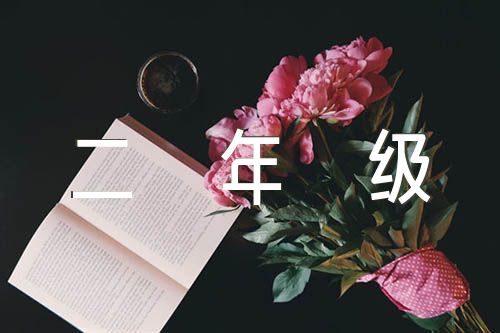导游词是导游人员引导游客观光游览时的讲解词,是导游员同游客交流思想,向游客传播文化知识的工具,也是应用写作研究的文体之一。以下是小编整理的关于大雁塔英文导游词5篇,欢迎阅读参考!
关于大雁塔英文导游词(1)
Good morning, ladies and gentlemen. I’m your local guide . Here we arrive at the Big Wild Goose Pagoda. This is the Cultural coordinate of the Qujiang New District and a Landmark Building in the ancient city of Xi'an. The sceneries are including the big wild goose pagoda, the da ci’en temple and the south and north squares.
In the center of the south square is the bronze statue of Monk Xuan Zang.Wearing a cassock, holding the staff, presenting a imposing appearance, we can simplely imagine , the master xuan zang are on a hard journey , firmly in pursuit of truth. Behind it are the da ci’en temple and the big wild goose pagoda.
玄奘铜像
Originally built in the Sui Dynasty, the temple was named Wulou Temple. Then, Crown Prince Li Zhi of the Tang Dynasty, in order to commemorate his mother, sponsored a repair project on the temple and named it Da Ci’en Temple. It was a typical Mahayana temple for the royal family. The Da Ci’en temple was destroyed in a war at the end of the Tang Dynasty. Only the pagoda was left intact. The present buildings in the temple were built in the Ming Dynasty. But now it covers only one seventh of the original area it did in the Tang Dynasty.
大慈恩寺来名 损毁 再建
Now look at the 3 main entrance gates. In Chinese, we call it “Shan men” means mountain gate. In the ancient times the Buddhist temples were usually built among the mountains.
三门
Walking north forwards, there are two small buildings. The one on the east side houses a bell, and the one on the west side houses a drum. The bell and drum towers are the (characteristic) landmarks of a temple. They were used to mark time for the monks in the temple. The bell is rung in the morning and the drum is struck at dusk.
钟鼓楼
The Great Hall is the center of the temple. Inside it, there are three buddhas of Sakyamuni. The one in the middle is called Fashen Buddha, which means the truth and law. The one on the west side is called Baoshen Buddha, and the one on the east side is called Yingshen Buddha.
大雄宝殿
After we visiting the great hall, we come to another core building--- the doctrine chamber(法堂)where the amitabha buddha is worshiped. It is said that at the word of the amitabha buddha, one will be led to paradise upon his death. This rubbing is called “xuan zang on his way back to chang’ an”. (负芨图) With rolls of scriptures on his back, a pair of straw sandals on his feet and an oil lamp on top of the rolls, xuan zang is making his way back to the capital.
Well, let’s know something about the famous monk in Chinese history, Xuan Zang. He was both a great translator and traveler. He had spent 17 years in India studying Buddhism. And when he came back to Chang’an, he had taken back more than 600 volumes of Buddhist scriptures. His “travel in the western regions” was based on what he had witnessed in about 128 countries and regions. And Xuan zang stayed in the da ci’en temple for 12years and translated more than 1000 volumes of buddhist scriptures. In prise of the master’s dedication to buddhism, emperor tai zong and the crown prince li zhi respectively built two famous tablets for him.
玄奘简介 经书 两个碑
Now we come to the foot of the Big Wild Goose Pagoda. Originally the pagoda was a five-story construction. And then it increased to be ten stories. But the war made the pagoda almost to ruins, so it was rebuilt with a seven-story structure. This pagoda is an architectural marvel. It was built with layers of bricks but without any cement in between. It’s indeed a good reflection of people’s wisdom and talent in ancient China.
大雁塔的结构简介
Well, Engraving autographs on the walls of the Big Wild Goose Pagoda became the custom in the Mid-tang Dynasty. All the successful candidates who passed the imperial examinations would climb up the pagoda and write poems and inscriptions to indicate that he would have a soaring career in the future. The poem from the famous poet bai juyi is especially widely known by us. Now we can still climb the pagoda and enjoy the sight of the old capital.
雁塔题名
On the top you can have a bird’s view of Xi’an and also a view of the gardens around. To the north of the pagoda, there is the largest public square in Xi’an and also in China. Everyday we can see the largest music fountain playing there at a certain time. The square is also surrounded by architectural imitations of Tang Dynasty. What’s more, it is not only provides citizens with leisure space, but also improves the environment and enhances the overall image of the city.
南广场
Not far from the pagoda, we can see another beautiful garden that is the Tang Paradise. It is a cultural theme park in the Tang style of an original royal garden. It has many new records: the largest movie on water screen in the world, the first theme park of five senses which includes sight, sound, taste, touch and smell (五感主题公园), the biggest outdoor fragrance project (室外芳香工程) in the world ad the biggest reproduction of the Tang royal garden in China. If you are interest in that, we can also have a visit this afternoon.
大唐芙蓉园
Ok, everyone, so much for this today. We still have some free time. We’ll leave at 2 o’clock, so please do not be late! And I’ll stay here, if you have any questions, you can ask me. By the way, watch your step please! Ok, it’s your turn. You can look around and enjoy yourselves. Thank you for lestening.
关于大雁塔英文导游词(2)
The Big Wild Goose Pagoda 大雁塔 The Temple of Heaven, literally the Altar of Heaven (Traditional Chinese: 天坛; Simplified Chinese: 天坛; pinyin: Tiān Tán) is a complex of Taoist buildings situated in southeastern urban Beijing, in Xuanwu District. Construction of the complex began in 1420, and was thereafter visited by all subsequent Emperors of the Ming and Qing dynasties. It is regarded as a Taoist temple, although the worship of Heaven, especially by the reigning monarch of the day, pre-dates Taoism.
The Temple grounds covers 2.73 km?? of parkland, and comprises three main groups of constructions, all built according to strict philosophical requirements:
The Earthly Mount (圜丘坛) is the altar proper. It is an empty platform on three levels of marble stones, where the Emperor prayed for favourable weather;
The House of Heavenly Lord (皇穹宇), a single-gabled circular building, built on a single level of marble stone base, where the altars were housed when not in use;
The Hall of Annual Prayer (祈年殿), a magnificent triple-gabled circular building, built on three levels of marble stone base, where the Emperor prayed for good harvests.
In ancient China, the Emperor of China was regarded as the "Son of Heaven", who administered earthly matters on behalf of, and representing, heavenly authority. To be seen to be showing respect to the source of his authority, in the form of sacrifices to heaven, was extremely important. The temple was built for these ceremonies, mostly comprised of prayers for good harvests.
Each winter solstice the Emperor and all his retinue would move through the city to encamp within the complex, wearing special robes and abstaining from eating meat; there the Emperor would personally pray to Heaven for good harvests. The ceremony had to be perfectly completed; it was widely held that the smallest of mistakes would constitute a bad omen for the whole nation in the coming year.
Inside the Hall of Annual Prayer.The Temple of Heaven is the grandest of the four great temples located in Beijing. The other prominent temples include the Temple of Sun in the east (日坛), the Temple of Earth in the north (地坛), and the Temple of Moon in the west (月坛).
According to Xinhua, in early 2005, the Temple of Heaven underwent a 47 million yuan (5.9 million USD) face-lift in preparation for the 2008 Beijing Summer Olympics and the restoration was completed on May 1st, 2006.
The Temple of Heaven was registered on the UNESCO World Heritage List in 1998.
关于大雁塔英文导游词(3)
As the symbol of the old-line Xian, Big Wild Goose Pagoda is a well-preserved ancient building and a holy place for Buddhists. It is located in the southern suburb of Xian City, about 4 kilometers (2.49 miles) from the downtown of the city. Standing in the Da Ci'en Temple complex, it attracts numerous visitors for its fame in the Buddhist religion, its si-mp-le but appealing style of construction, and its new square in front of the temple. It is rated as a National Key Cultural Relic Preserve as well as an AAAA Tourist Attraction.
This attraction can be divided into three parts: the Big Wild Goose Pagoda, the Da Ci'en Temple, and the North Square of Big Wild Goose Pagoda.
Big Wild Goose PagodaOriginally built in 652 during the reign of Emperor Gaozong of the Tang Dynasty (618-907), it functioned to collect Buddhist materials that were taken from India by the hierarch Xuanzang.
Xuanzang started off from Chang'an (the ancient Xian), along the Silk Road and through deserts, finally arriving in India, the cradle of Buddhism. Enduring 17 years and traversing 100 countries, he obtained Buddha figures, 657 kinds of sutras, and several Buddha relics. Having gotten the permission of Emperor Gaozong (628-683), Xuanzang, as the first abbot of Da Ci'en Temple, supervised the building of a pagoda inside it. With the support of royalty, he asked 50 hierarchs into the temple to translate Sanskrit in sutras into Chinese, totaling 1,335 volumes, which heralded a new era in the history of translation. Based on the journey to India, he also wrote a book entitled 'Pilgrimage to the West' in the Tang Dynasty, to which scholars attached great importance.
First built to a height of 60 meters (197 feet) with five stories, it is now 64.5 meters (211.6 feet) high with an additional two stories. It was said that after that addition came the saying-'Saving a life exceeds building a seven-storied pagoda'. Externally it looks like a square cone, si-mp-le but grand and it is a masterpiece of Buddhist construction. Built of brick, its structure is very firm. Inside the pagoda, stairs twist up so that visitors can climb and overlook the panorama of Xian City from the arch-shaped doors on four sides of each storey. On the walls are engraved fine statues of Buddha by the renowned artist Yan Liben of the Tang Dynasty. Steles by noted calligraphers also grace the pagoda.
As for the reason why it is called Big Wild Goose Pagoda, there is a legend。
关于大雁塔英文导游词(4)
As the symbol of the old-line Xian, Big Wild Goose Pagoda is a well-preserved ancient building and a holy place for Buddhists. It is located in the southern suburb of Xian City, about 4 kilometers (2.49 miles) from the downtown of the city. Standing in the Da Ci'en Temple complex, it attracts numerous visitors for its fame in the Buddhist religion, its simple but appealing style of construction, and its new square in front of the temple. It is rated as a National Key Cultural Relic Preserve as well as an AAAA Tourist Attraction.
This attraction can be divided into three parts: the Big Wild Goose Pagoda, the Da Ci'en Temple, and the North Square of Big Wild Goose Pagoda.
Big Wild Goose PagodaOriginally built in 652 during the reign of Emperor Gaozong of the Tang Dynasty (618-907), it functioned to collect Buddhist materials that were taken from India by the hierarch Xuanzang.
Xuanzang started off from Chang'an (the ancient Xian), along the Silk Road and through deserts, finally arriving in India, the cradle of Buddhism. Enduring 17 years and traversing 100 countries, he obtained Buddha figures, 657 kinds of sutras, and several Buddha relics. Having gotten the permission of Emperor Gaozong (628-683), Xuanzang, as the first abbot of Da Ci'en Temple, supervised the building of a pagoda inside it. With the support of royalty, he asked 50 hierarchs into the temple to translate Sanskrit in sutras into Chinese, totaling 1,335 volumes, which heralded a new era in the history of translation. Based on the journey to India, he also wrote a book entitled 'Pilgrimage to the West' in the Tang Dynasty, to which scholars attached great importance.
First built to a height of 60 meters (197 feet) with five stories, it is now 64.5 meters (211.6 feet) high with an additional two stories. It was said that after that addition came the saying-'Saving a life exceeds building a seven-storied pagoda'. Externally it looks like a square cone, simple but grand and it is a masterpiece of Buddhist construction. Built of brick, its structure is very firm. Inside the pagoda, stairs twist up so that visitors can climb and overlook the panorama of Xian City from the arch-shaped doors on four sides of each storey. On the walls are engraved fine statues of Buddha by the renowned artist Yan Liben of the Tang Dynasty. Steles by noted calligraphers also grace the pagoda.
As for the reason why it is called Big Wild Goose Pagoda, there is a legend. According to ancient stories of Buddhists, there were two branches, for one of which eating meat was not a taboo. One day, they couldn't find meat to buy. Upon seeing a group of big wild geese flying by, a monk said to himself: 'Today we have no meat. I hope the merciful Bodhisattva will give us some.' At that very moment, the leading wild goose broke its wings and fell to the ground. All the monks were startled and believed that Bodhisattva showed his spirit to order them to be more pious. They established a pagoda where the wild goose fell and stopped eating meat. Hence it got the name 'Big Wild Goose Pagoda'.
Da Ci'en Temple
Da Ci'en Temple is the home of Big Wild Goose Pagoda. In 648, to commemorate the dead virtuous queen, royalty ordered the building of a temple named 'Ci'en' (Mercy and Kindness), for which the status and scale far exceeded all others. Today, with an area of 32,314 square meters (38,648.5 square yards), one seventh of the original area, it still retains its grandeur.
Before the temple, there stands a statue of hierarch Xuanzang, the meritorious hierarch. Walking on and across a small bridge, visitors will see the gates of the temple. With guarding lions, the temple seems stately for lions were said to function as talismans.
Entering the temple you will see two buildings-Bell Tower in the east and Drum Tower in the west. Inside the Bell Tower hangs an iron bell 15 tons (14.76 gross tons) in weight. It was molded in 1548 in the Ming Dynasty (1368-1644). Along the central axis are arranged the Hall of Mahavira, Sermon Hall, Big Wild Goose Pagoda, and the Hall of Xuanzang Sanzang. In the Hall of Mahavira are three carved statues of Sakyamuni, and 18 arhats as well as Xuanzang. The Sermon Hall is where Buddhist disciples would listen to a sermon. A bronze statue of Amitabha is dedicated and a Buddha statue is collected by Xuanzang as oblation. The Hall of Xuanzang Sanzang is north of Big Wild Goose Pagoda. In this hall are Xuanzang's relic and a bronze statue of a seated Xuanzang. The inner wall is chiseled with murals depicting this hierarch's story. Renowned as the contemporary Dunhuang Buddhist storehouse praised by UNESCO, it is the biggest memorial of Xuanzang.
North Square of Big Wild Goose Pagoda
Surrounding Big Wild Goose Pagoda, the scenery is also quite charming, especially the square north of the Da Ci'en Temple. Covering about 110,000 square meters (131563 square yards) plus 20,000 square meters (23920.6 square yards) of water area, it holds many records: in Asia, it is the biggest Tang-culture square, the biggest fountain and waterscape square, and the largest-scale sculptures area. In the world, it has the most benches, the longest light-belt, and the largest-scale acoustic complex.
The entire square is composed of waterscape fountains, a cultural square, gardens and tourist paths. There you can taste real Chinese culture and traditions and fully enjoy the truly attractive views. With reliefs on the theme of the prosperous Tang Dynasty, 200-meter-long (656-foot-long) sculpture groups, 8 groups of sculpted figures, 40 relievos on the land, and 22 styles of musical fountains, it has become a must-see when you visit Big Wild Goose Pagoda.
关于大雁塔英文导游词(5)
Good morning, my friends! Welcome to Dayan Pagoda, a magnificent place in history. I’m your tour guide today, xiao Wang from XISU Tourism Institute.
Dayan Pagoda is situated in the Da Ci’en Temple, about 4km from the urban center; it is one of the famous Buddhist pagodas in China.
Da Ci'en Temple is located in the southern suburb of Xi'an City, originally Jinchang Lane in the southeast of Chang'an City, the capital of the Tang Dynasty. It was the largest temple in China's Tang Dynasty as well as one of the three Buddhist scriptures translation places of Chang'an City in the Tang Dynasty. Da Ci'en Temple was built in the year 648 of the Zhenguan reign of the Tang Dynasty by Crown Prince Li zhi in order to mourn for his mother. Therefore, it is named Da Ci'en. Since the Tang Dynasty, Da Ci'en Temple has kept its prosperity for more than 1,300 years. Its history is long and glorious. Now, the extant area of this temple is just that of the West Pagoda Yard in the Tang Dynasty. The present Da Ci'en Temple sits back to the north and faces to the south, and consists of the following main buildings: Gate of the Temple, Bell and Drum Towers, Hall for the Great Buddha, etc.
In 652 AD, Dayan Pagoda was built to store the sutras and the figurines of Buddha, which were brought from India by a famous Buddhist translator and traveler Tang Sanzang, also known by his Buddhist name as Xuanzang. Xuan Zang went to India to research the Buddhist doctrines in 629 AD, and then he came back in 645 AD with a great deal of Buddhist scriptures. In the temple, he translated lots of chapters of the Buddhist scriptures into Chinese. In order to protect the Buddhist Scriptures, Monk Xuanzang asked for a pagoda to be built. He designed the pagoda like a wild goose as he saw in India. So this pagoda was called the Wild Goose Pagoda in memory of the famous Monk. Its five storeys are 60 meters in height. The decay of the earth-cored pagoda caused the new construction of a 10-storey pagoda from 701 to 704. Damage by the war reduced it to seven storeys, to what it is today.
The storyed pagoda was an architectural marvel. It was built with layers of bricks but without any cement in between. The bracket style in traditional Chinese architecture was also used in the construction. The grand body of the pagoda with its solemn appearance, simple style and high structure, is indeed a good example of ancient people's wisdom and talent. Walls and doors are carved with vivid and exquisite figures of Buddha, reflecting the profundity in the paintings of the Tang Dynasty.
In the Tang dynasty, every successful candidate who passed the imperial examinations would have to climb up Dayan Pagoda and wrote poems and inscriptions there. This ritual would symbolize a soaring career in the future. The fashion of writing poems and leaving inscriptions on the horizontal bars over doors and stone frameworks by successful candidates of the imperial examinations went on as far as the Ming dynasty. These poem sand inscriptions have survived till this day as a fine mirror to the city's past.
There are fantastic views from the top of the pagoda of the grid-like streets below and it seems hard to believe today that the area around here was once countryside and fields! It is traditional to throw coins from the windows of the pagoda in the hope that this will bring good luck.
The Ming Dynasty Wu Cheng'en, collected the materials of Xuan zang's experience handed down and wrote a novel titled "Journey to the West" which later became one of four greatest novels in China. As a result, the Television Series about this story was made and became world-renowned.
Surrounding Big Wild Goose Pagoda, the scenery is also quite charming. The Music Fountain is the biggest the biggest fountain and waterscape square in Asia. In the world, it has the most benches, the longest light-belt, and the largest-scale acoustic complex.
The entire square is composed of waterscape fountains, a cultural square, gardens and tourist paths. There you can taste real Chinese culture and traditions and fully enjoy the truly attractive views. It has become a must-see when you visit Big Wild Goose Pagoda.
Near the Big Wild Goose Pagoda, Tang Paradise is located in the Qujiang Area, southeast of the Xian City. It is a newly opened tourist attraction. What makes Tang Paradise incredible is that it is no longer the garden mode of only water and mountains in the Chinese traditional sense. The outstanding designers of the magnificent Tang Paradise have integrated almost everything representative of the Tang Dynasty, such as the poetry, the songs and dance, the marketplaces, the food, the women's lifestyles, and science into every site using cultural themes, thus endowing every place with its own story and its own place in the tapestry of Tang Dynasty culture.
Well, so much for my introduction, I will leave 30 minutes for you to enjoy yourself. If you have any questions, please let me know, I’ll always be here waiting for you. See you!
相关文章:
1.北京的英文导游词
2.北京的英文导游词精选
3.英文的导游词精选范文
4.著名景点旅游英文导游词范文
5.北京概况导游词英文版
6.长城中英文对照导游词
7.上海旅游介绍英文导游词
8.杭州景点英语导游词
http://m.feic31.com/shiyongwendang/133947.html




